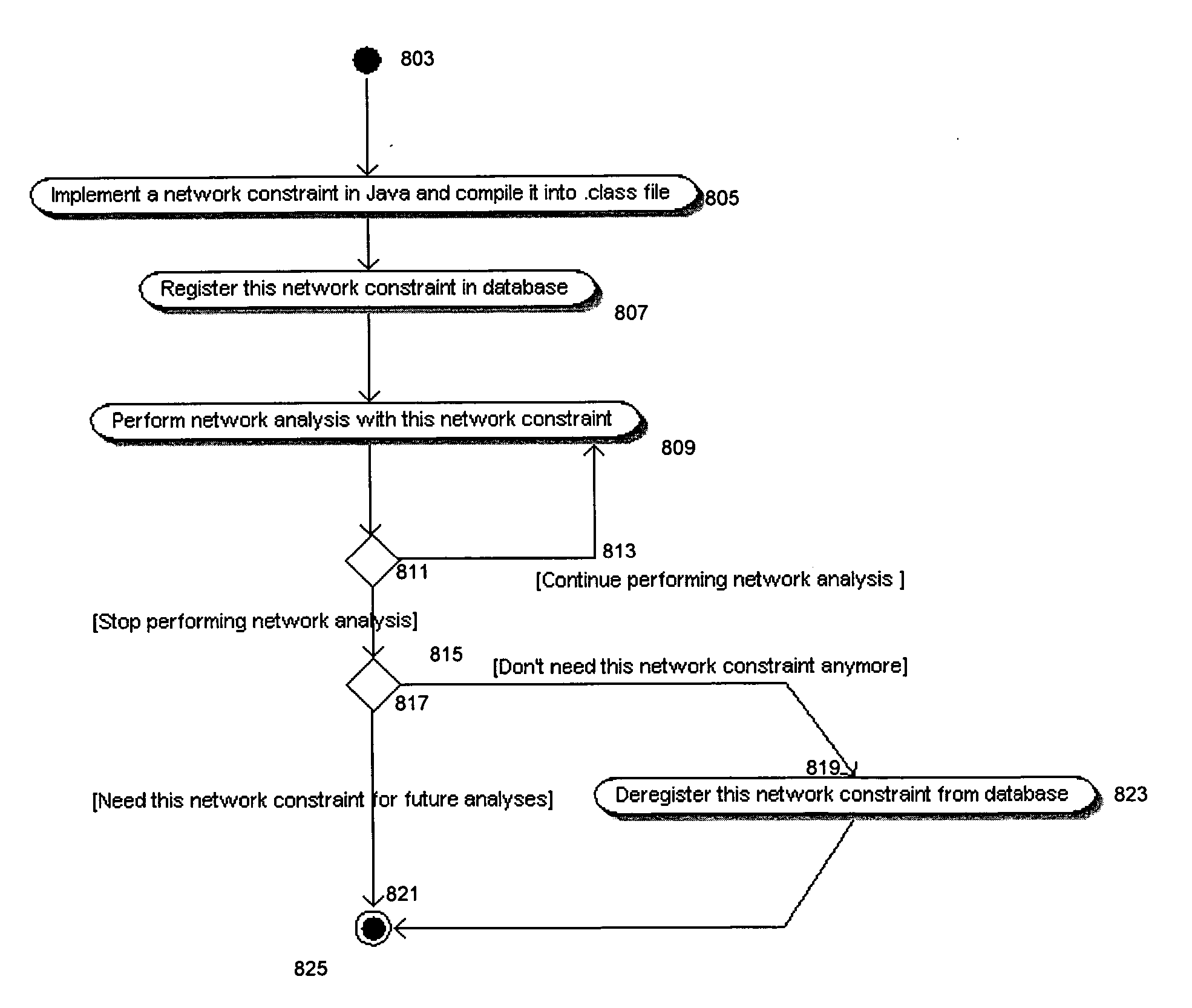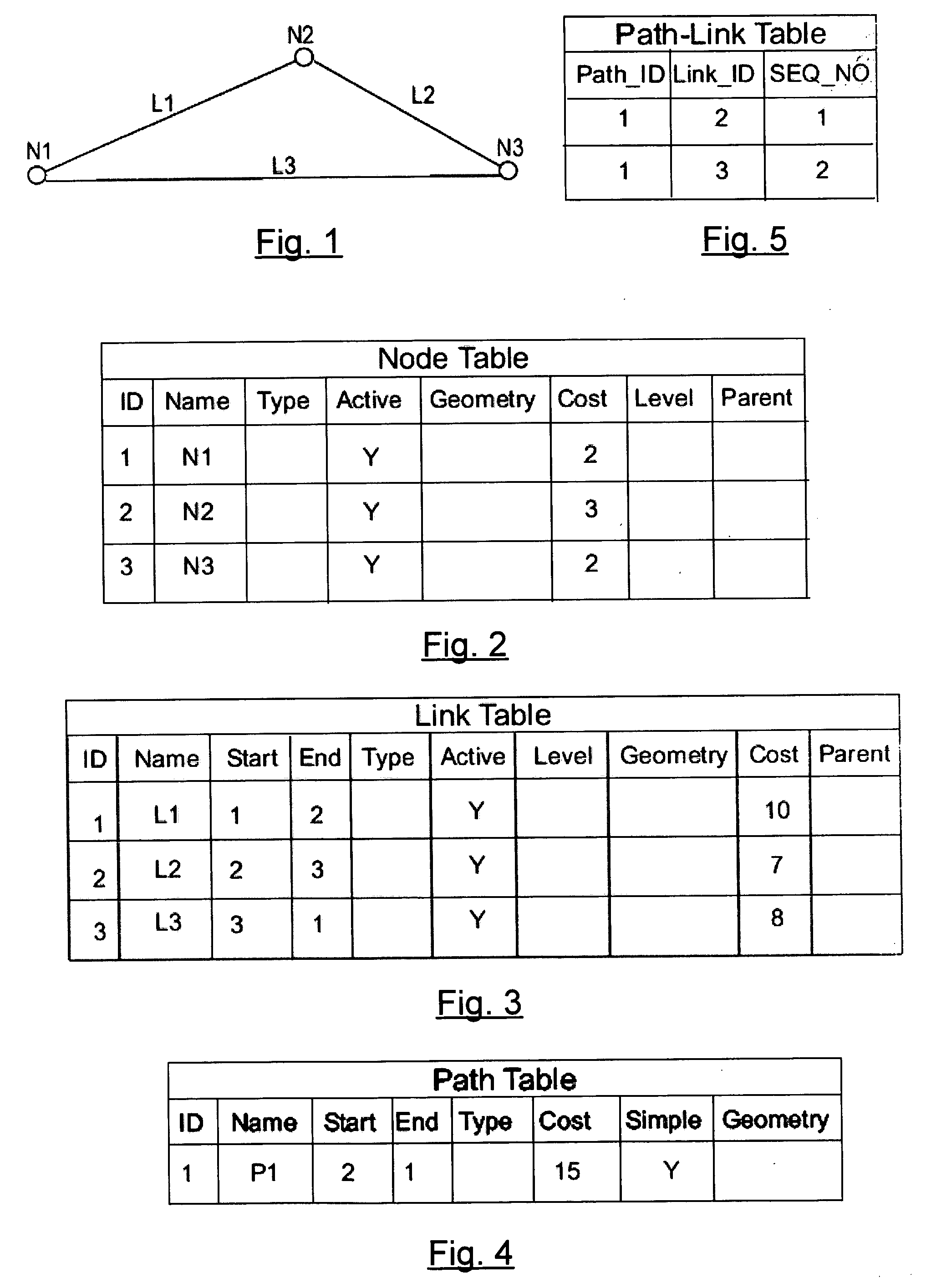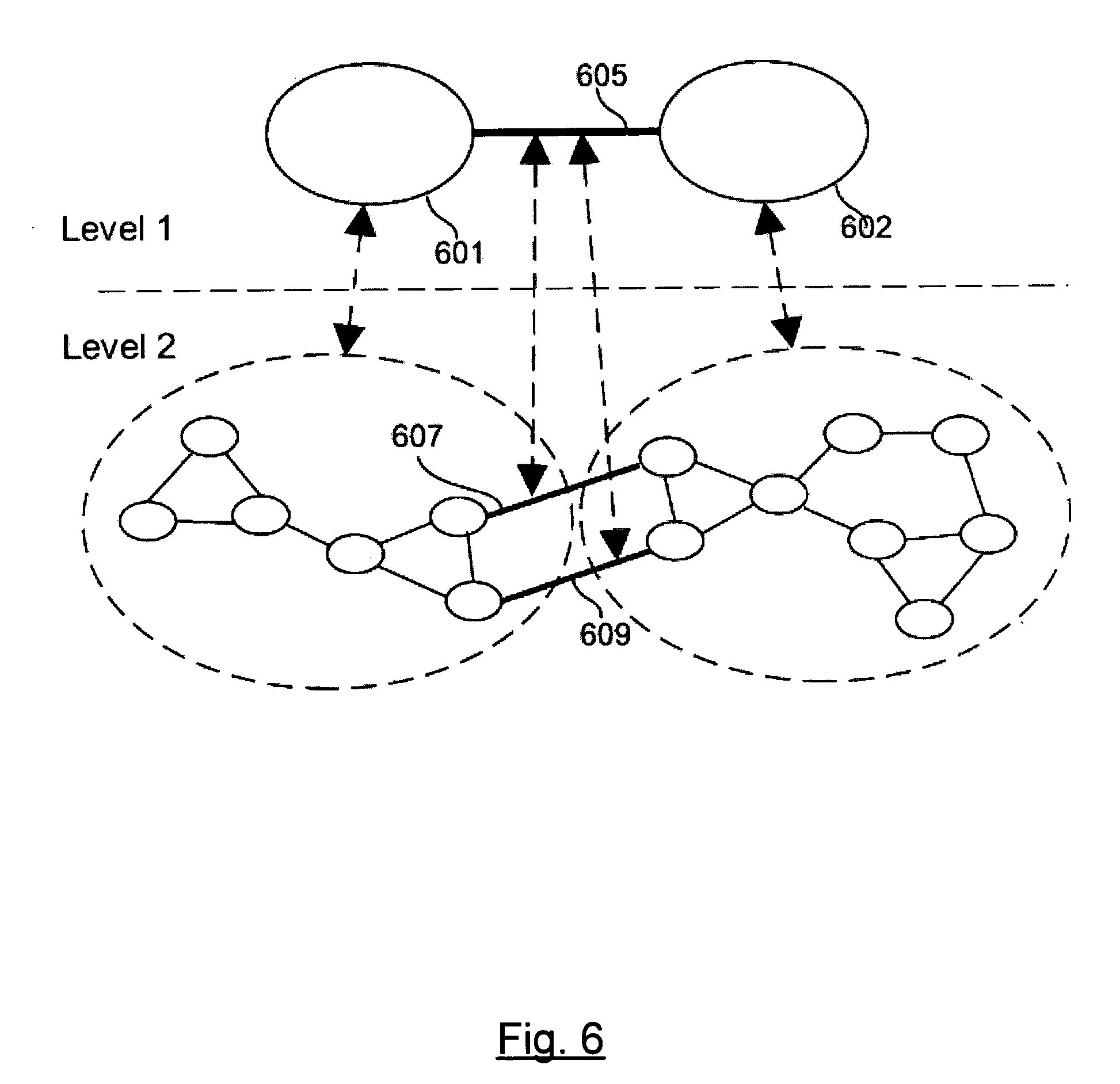Incorporating network constraints into a network data model for a relational database management system
a database management system and network data model technology, applied in the field of electronic data processing systems, can solve the problems of reducing the usability of the network data model, adding constraints on the path computation, and having difficulty understanding the system in which the api was to be used
- Summary
- Abstract
- Description
- Claims
- Application Information
AI Technical Summary
Benefits of technology
Problems solved by technology
Method used
Image
Examples
Embodiment Construction
The PL / SQL Network Data Model API
[0064] PL / SQL is a procedural language superset of the structured query language (SQL). As implemented in the Oracle10g RDBMS, PL / SQL may be used to codify business rules through the creation of stored procedures and packages, to trigger database events to occur, or to add programming logic to the execution of SQL commands. The network data model PL / SQL API provides functions and procedures for creating, accessing, managing, and analyzing networks on a database server. These functions and procedures can be grouped into the following logical categories: (a) creating networks; (b) copying and deleting networks: (c) creating network tables; (d) validating network objects; (e) retrieving information (getting information about the network, checking for a characteristic), and (f) analyzing networks. The user can use the Java API to perform the same operations as can be done using PL / SQL. The analysis operations include the following: [0065] Shortest path...
PUM
 Login to View More
Login to View More Abstract
Description
Claims
Application Information
 Login to View More
Login to View More - R&D
- Intellectual Property
- Life Sciences
- Materials
- Tech Scout
- Unparalleled Data Quality
- Higher Quality Content
- 60% Fewer Hallucinations
Browse by: Latest US Patents, China's latest patents, Technical Efficacy Thesaurus, Application Domain, Technology Topic, Popular Technical Reports.
© 2025 PatSnap. All rights reserved.Legal|Privacy policy|Modern Slavery Act Transparency Statement|Sitemap|About US| Contact US: help@patsnap.com



